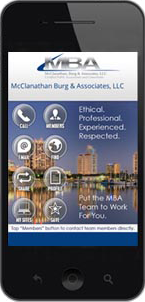Back-to-School Tips for Grownups

August is back-to-school time across the country. Whether the school buses are already disrupting your commute to work — or will be soon — the start of the school year brings opportunities for savvy business owners.
Here are some insights into this market segment and creative, real-world marketing solutions to inspire you to think outside the pencil box this school year.
ABCs of Education-Related Tax Breaks
On a personal level, there are numerous education-related federal tax deductions and credits to consider. But the key to claiming them is detailed recordkeeping. So, save those receipts!
Educator Expenses
Qualifying elementary and secondary school teachers and other eligible educators (such as counselors and principals) can deduct up to $250 of any unreimbursed expenses that are otherwise deductible as a trade or business expense. If you’re married filing jointly and both spouses are educators, you can deduct up to $500 of unreimbursed expenses — but not more than $250 each.
This deduction was made permanent under the Protecting Americans from Tax Hikes (PATH) Act of 2015. Starting in 2016, the deduction will be indexed for inflation and include professional development expenses.
Without this deduction, unreimbursed professional development expenses would be deductible only as unreimbursed-employee-business-expense miscellaneous itemized deductions subject to the 2%-of-AGI floor. Qualified expenses include amounts paid or incurred during the tax year for books, supplies, computer equipment (including related software and services), other equipment and supplementary materials that you use in the classroom. For courses in health and physical education, the costs for supplies are qualified expenses only if related to athletics.
Higher Education Tuition Tax Breaks
College can be particularly expensive for families. Fortunately, Uncle Sam offers tax breaks to help ease the financial burden. If you pay higher education costs for yourself or an immediate family member, including a child, you may qualify for either one of two education tax credits (but you can’t claim both): The maximum American Opportunity Tax Credit (AOTC) is $2,500 per student while the maximum Lifetime Learning credit is $2,000 per taxpayer. Both higher education credits are phased out for upper-income taxpayers based on modified adjusted gross income (MAGI).
In addition, the deduction for qualified tuition and fee expenses was extended through 2016 by the PATH Act. Depending on your MAGI, the deduction on your 2016 return is either $4,000 or $2,000 before it’s completely phased out. (Note that you can’t deduct tuition expenses if you claim one of the higher education credits.)
The IRS recently issued proposed regulations containing compliance requirements for people who want to take the AOTC, the Lifetime Learning credit or the deduction for qualified tuition and fee expenses.
Under the Trade Preferences Extension Act of 2015, students must generally receive a Form 1098-T, “Tuition Statement,” to claim these tax breaks for tax years beginning after June 29, 2015. The proposed regs note that the amount reported on the Form 1098-T may not reflect the total amount of qualified tuition and related expenses that the taxpayer has paid during the tax year, because certain expenses aren’t required to be reported on the Form 1098-T.
For example, expenses for course materials paid to a vendor other than an eligible educational institution would be eligible for the AOTC. However, because these expenses aren’t paid to an eligible educational institution, there’s no requirement to report the amounts on a Form 1098-T.
Under the PATH Act, taxpayers claiming the AOTC must also include on their return the employer identification number of the educational institution to which qualifying tuition and related expenses are paid and the tax identification number (TIN) of the student and (if different) the taxpayer. The TINs generally must have been issued on or before the due date of the return on which the credit is claimed. The proposed regs clarify these requirements, which were effective for tax returns filed after December 18, 2015.
Got Questions?
Parents often wonder if money they spend on education expenses can be deducted or will earn a tax credit. These are just a couple of ideas. Contact your tax adviser for more details about education-related tax breaks at the federal and state levels.
Back-to-School Business Lessons
Parents open their pocketbooks every August to prepare for the school year. To gauge the market for educational spending, consider the latest statistics compiled by the U.S. Census Bureau:
- From preschool to college, more than 77 million children and adults were enrolled in school in the United States in October 2014. They composed more than one-quarter of the U.S. population age 3 and older.
- U.S. elementary and secondary public school systems spent an average of roughly $11,000 per pupil in 2014.
- Families spent about $8.8 billion on back-to-school clothes in August 2015. The amount spent on new books was estimated at only $1.6 billion.
- The construction budget for public and private schools was about $83.5 billion in 2015. This includes renovations, build-outs and new construction projects.
Retailers are busy selling books, backpacks, gym shoes and snacks to start off the school year. And contractors are winding up summer building and renovation projects.
But they’re not the only types of businesses that can jump on the back-to-school bus. Here are some real-world examples of ways businesses leverage this market to promote themselves and boost long-term value. Can your business borrow from this list of creative ideas?
Create a Virtual “Brag Book”
A creative agency posts photos of employees’ children on the first day of school to share with clients on social media and through an e-blast campaign. It gives parents an opportunity to show off their offspring — and it creates a buzz on the agency’s Facebook page.
The brag book’s innovative design demonstrates the agency’s creative skills in a fun, personal way. It also helps attract talent by showcasing the agency’s fun, family-friendly atmosphere.
Offer Back-to-School Promos for Parents
A coffee shop offers free “boo-hoo/yahoo” lattes on Monday mornings to parents who are sad (or elated) about the start of the school year. Bright signage attracts parents en route to school, encouraging them to sample the eco-friendly, locally roasted blends.
The promotional campaign runs through the end of September and gets busier every week — a sign that it’s working to drive foot traffic to the start-up.
Offer Freebies to Good Students
When report cards are handed out in an Atlanta suburb this school year, students who achieve perfect attendance or straight A’s will receive a coupon from a local pizzeria for free personal-size pizzas. This campaign serves two purposes.
First, it brings entire families into the restaurant when the kids redeem their coupons. That adds revenues and profits. Second, the campaign creates goodwill in the community by showcasing responsible corporate citizenship. To capitalize on this element, the restaurant tacks Polaroid pictures of proud kids with their pizzas, report cards in hand, on the back wall.
Sponsor a Parent-Teacher Organization (PTO) or Extracurricular Group
A local realtor group sponsored a middle-school PTO. The sponsorship includes ads in the school’s weekly e-newsletter and in welcome packets for new PTO members. Individual realtors in the group also conduct monthly gift card drawings for parents and teachers who follow them on Facebook.
The agency hopes parents and teachers will remember its realtors’ names and faces when they’re ready to buy or sell their homes.
Participate in STEM Activities
An engineering firm recently donated old computers and printers to an elementary school that serves economically disadvantaged students. The equipment will be used in the school district’s new K-12 program to get kids interested in careers in science, technology, engineering and math (STEM) disciplines. In the spring, the company will mentor a select group of high school seniors who are planning to pursue engineering degrees in college.
Participating in STEM programs not only fosters corporate charity and goodwill. It can also pay back over the long run: When the human resources department is looking for skilled talent, kids who benefited from the firm’s STEM efforts may later return as loyal, full-time employees.
Launch an Apprenticeship Program
The back-to-school season has also inspired a high-tech manufacturer to partner with a vocational program at the local community college to offer registered apprenticeships through a state apprenticeship agency. In exchange for working for the manufacturer, students will receive college credits, on-the-job training and weekly paychecks. Their hourly wages will increase as they demonstrate proficiency.
The company expects to hire at least some of these apprentices to fill full-time positions in 2018.
What’s Right for Your Business?
Whether schools near you are already in session — or will open soon — it’s not too late to think about how your business can benefit. Your financial advisers can help you brainstorm ways to leverage relationships with local schools to boost revenues, give back to your community and add long-term value.
© Copyright 2016. All rights reserved.
Brought to you by: McClanathan, Burg & Associates, LLC




